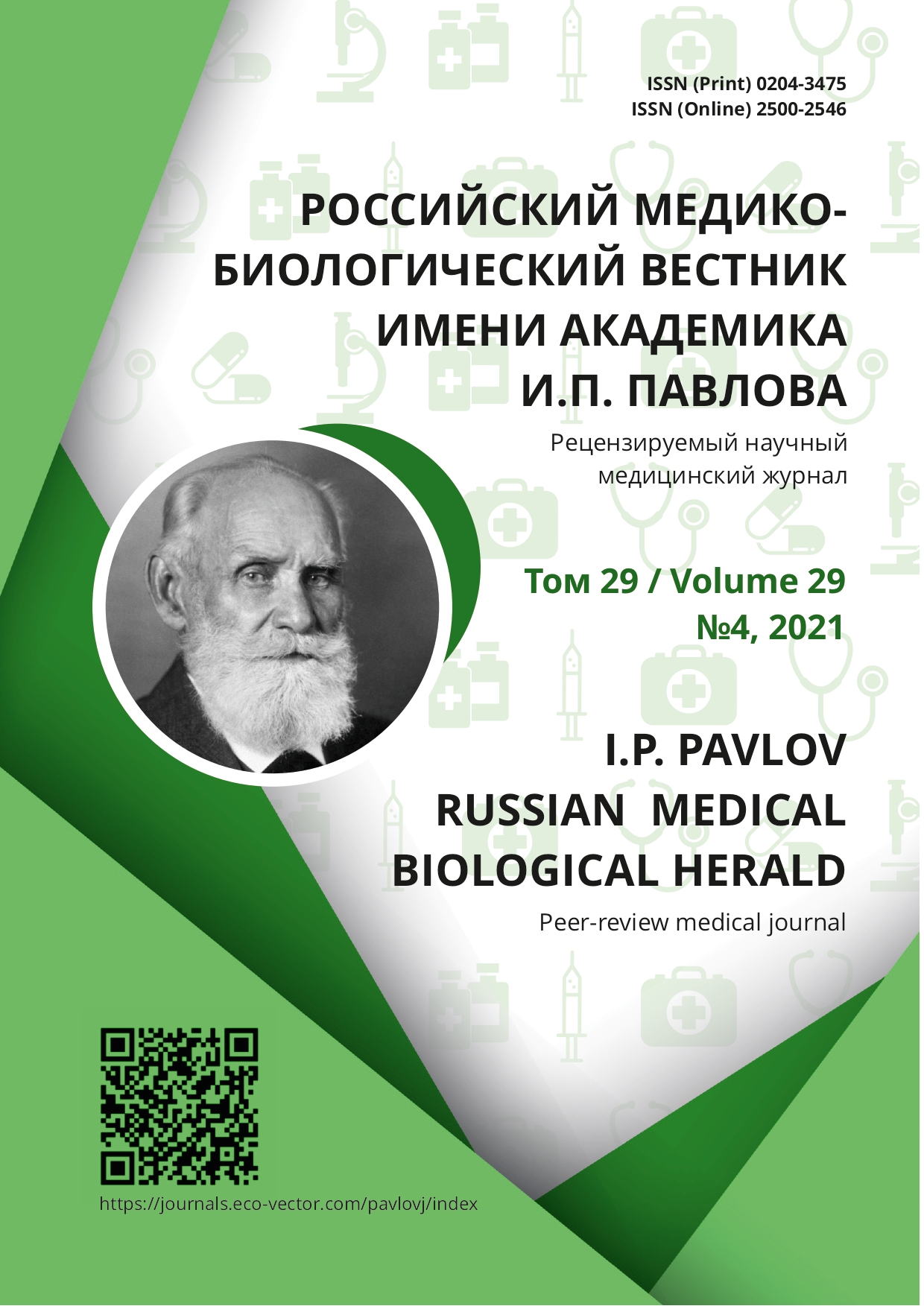Peculiarities of the rate of adaptive restructuring of heart rate variability of natives of different generations living in the coastal and intracontinental climatic zones of the Magadan region
- Authors: Averyanova I.V.1, Maksimov A.L.2,3
-
Affiliations:
- Scientific Research Center “Arktika”, Fareastern Branch of the Russian Academy of Sciences
- Arktika Scientific and Research Center of Far East Branch of the Russian Academy of Sciences
- Institute of Physiology of Komi Scientific Center of Ural branch of the Russian Academy of Sciences
- Issue: Vol 29, No 4 (2021)
- Pages: 465-473
- Section: Original study
- Submitted: 09.03.2021
- Accepted: 18.10.2021
- Published: 15.12.2021
- URL: https://journals.eco-vector.com/pavlovj/article/view/62905
- DOI: https://doi.org/10.17816/PAVLOVJ62905
- ID: 62905
Cite item
Abstract
Introduction: Currently, young Caucasian populations of different generations are living in the Magadan region (MR). The study of heart rate variability (HRV) in these samples will add to the modern understanding of the physiological mechanisms of adaptive restructures in those living in coastal and continental zones of the MR.
Aim: To study restructures of HRV in young Caucasians who were representatives of the zeroth, first, second, and third generations living in the coastal and continental zones of MR, with significant differences in the extremality of natural environmental factors.
Materials and methods: TThe study involved 870 young men aged 17–21 years. HRV parameters were analyzed using a Varikard device.
Results: Compared with individuals of the same age living in the coastal zone, residents of the continental climatic zone were characterized by more evident predomination of the parasympathetic division of the autonomic nervous system. A tendency to the enhancement of the parasympathetic influence from the zeroth to subsequent generations was observed in both young men living in the coastal and continental zones.
Conclusion: The direction of adaptive shifts in the restructuring of HRV characteristics varied depending on the climatic zone where the examined individuals lived: in the continental climate of the MR, adaptive restructuring of HRV parameters occurs faster and already completed at the first generation in comparison with migrants, with no significant differences between representatives of the first and second generations. In young men living in coastal zones, restructures occur more slowly and continue upto the representatives of the third generation.
Full Text
About the authors
Inessa V. Averyanova
Scientific Research Center “Arktika”, Fareastern Branch of the Russian Academy of Sciences
Email: Inessa1382@mail.ru
ORCID iD: 0000-0002-4511-6782
SPIN-code: 9402-0363
MD, Cand. Sci. (Biol.)
Russian Federation, MagadanArkady L. Maksimov
Arktika Scientific and Research Center of Far East Branch of the Russian Academy of Sciences; Institute of Physiology of Komi Scientific Center of Ural branch of the Russian Academy of Sciences
Author for correspondence.
Email: arktika@online.magadan.su
MD, Dr. Sci. (Med.), Professor
Russian Federation, Magadan; SyktyvkarReferences
- Averyanova IV, Maximov AL Lipid and carbohydrate metabolism observed in aboriginal and European students having different terms of residing in territory of Magadan region. Human Ecology. 2015;(9):44–9. (In Russ).
- Raffin J, Barthélémy J-C, Dupré C, et al. Exercise Frequency Determines Heart Rate Variability Gains in Older People: A Meta-Analysis and Meta-Regression. Sports Medicine. 2019;49(5):719–29. doi: 10.1007/s40279-019-01097-7
- Trubachev VV, Gorbunov AV, Trubacheva VS. The cardiorespiratory plasticity in children during the procedure of paced breathing. Russian Journal of Physiology 2016;102(4):500–11. (In Russ).
- Kompleks dlya analiza variabel’nosti serdechnogo ritma «Varikard». Ryazan’: YuIMN; 2005. (In Russ).
- Bayevskiy RM, Ivanov GG, Chireykin LV, et al. Analiz variabel’nosti serdechnogo ritma pri ispol’zovanii razlichnykh elektrokardiograficheskikh sistem (metodicheskiye rekomendatsii). Vestnik Aritmologii. 2001;(24):65–87. (In Russ).
- Maximov AL, Averyanova IV. Informative Value of Cardiohemodynamics and Heart Rate Variability Indices Observed in Young Males with Different Levels of Hypoxia-Hypercapnia Resistance. Ul'yanovskii medico-biologicheskii zhurnal. 2014;(2): 90–5. (In Russ).
- Borovikov VP. Statistica. Iskusstvo analiza dannykh na komp’yutere: dlya professionalov. 2nd ed. Saint-Petersburg: Piter; 2003. (In Russ).
- Coote JH, Spyer KM. Central control of autonomic function. Brain and Neuroscience Advances. 2018;(2):239821281881201. doi: 10.1177/2398212818812012
- Mortola JP, Marghescu D, Siegrist-Johnstone R, et al. Respiratory sinus arrhythmia during a mental attention task: the role of breathing-specific heart rate. Respiratory Physiology & Neurobiology. 2020;(272):103331. doi: 10.1016/j.resp.2019.103331
- Shlyk NI. Serdechnyy ritm i tipregulyatsii u detey, podrostkov i sportsmenov. Izhevsk: Udmurtskiy universitet; 2009. (In Russ).
- Karemaker JM. Analysis of blood pressure and heart rate variability: theoretical consideration and clinical applicability. Clinical autonomic disorders. Evaluation and management. Boston; 1993. P. 315–30.
- Sammito S, Böckelmann I. New reference values of heart rate variability during ordinary daily activity. Heart Rhythm. 2017;14 (2):304–7. doi: 10.1016/j.hrthm.2016.12.016
- Bayevskiy RM, Berseneva AP. Vvedeniye v donozologicheskuyu diagnostiku. Moscow: Slovo; 2008. (In Russ).
- Mamiy VI. Spectral analysis and interpretation of spectral components of heart rate variability. Human Physiology. 2006;32(2):169–76. doi: 10.1134/S0362119706020083
- Sukhanova IV, Maximov AL, Vdovenko SI. Peculiarities of adaptation observed in young male residents of Magadan region: morphofunctional changes (Report 1). Human Ecology. 2013;(8):3–10. (In Russ).
- Maximov AL. The current methodological aspects for adaptation of aboriginal and other populations in the Russia's Northeast. Human Ecology. 2009;(6):17–21. (In Russ).
- LeBlanc J, Dulac S, Côté J, et al. Autonomic nervous system and adaptation to cold in man. Journal of Applied Physiology. 1975;39(2):181–6. doi: 10.1152/jappl.1975.39.2.181
- Farrace S, Ferrara M, De Angelis C, et al. Reduced sympathetic outflow and adrenal secretory activity during a 40-day stay in the Antarctic. International Journal of Psychophysiology. 2003;49(1):17–27. doi: 10.1016/s0167-8760(03)00074-6
Supplementary files










